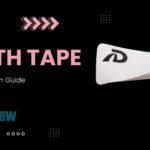Northwestern University researchers have developed soft, miniaturized wearable devices that continuously and wirelessly monitor sounds inside patients’ bodies, which could offer a new tool for detecting and analyzing apneas in premature infants.
The study is published in Nature Medicine.
When developing the new devices, the researchers had two vulnerable communities in mind: premature babies in the neonatal intensive care unit (NICU) and post-surgery adults. In the third trimester of pregnancy, babies’ respiratory systems mature so babies can breathe outside the womb. Babies born either before or in the earliest stages of the third trimester, therefore, are more likely to develop lung issues and disordered breathing complications.
Particularly common in premature babies, apneas are a leading cause ofcomm prolonged hospitalization and potentially death. When apneas occur, infants either do not take a breath (due to immature breathing centers in the brain) or have an obstruction in their airway that restricts airflow.
Some babies might even have a combination of the two. Yet, there are no current methods to continuously monitor airflow at the bedside and to accurately distinguish apnea subtypes, especially in these most vulnerable infants in the clinical NICU.
“Many of these babies are smaller than a stethoscope, so they are already technically challenging to monitor,” says Debra E. Weese-Mayer, MD, a study co-author, chief of autonomic medicine at Ann & Robert H. Lurie Children’s Hospital of Chicago and the Beatrice Cummings Mayer Professor of Autonomic Medicine at Feinberg, in a release. “The beauty of these new acoustic devices is they can non-invasively monitor a baby continuously—during wakefulness and sleep—without disturbing them.
“These acoustic wearables provide the opportunity to safely and non-obtrusively determine each infant’s ‘signature’ pertinent to their air movement (in and out of airway and lungs), heart sounds, and intestinal motility day and night, with attention to circadian rhythmicity. And these wearables simultaneously monitor ambient noise that might affect the internal acoustic ‘signature’ and/or introduce other stimuli that might affect healthy growth and development.”
In collaborative studies conducted at the Montreal Children’s Hospital in Canada, health care workers placed the acoustic devices on babies just below the suprasternal notch at the base of the throat. Devices successfully detected the presence of airflow and chest movements and could estimate the degree of airflow obstruction with high reliability, therefore allowing the identification and classification of all apnea subtypes.
“When placed on the suprasternal notch, the enhanced ability to detect and classify apneas could lead to more targeted and personalized care, improved outcomes, and reduced length of hospitalization and costs,” says Wissam Shalish, MD, PhD, a neonatologist at the Montreal Children’s Hospital and co-first author of the paper, in a release. “When placed on the right and left chest of critically ill babies, the real-time feedback transmitted whenever the air entry is diminished on one side relative to the other could promptly alert clinicians of a possible pathology necessitating immediate intervention.”
Photo caption: A device gently adheres to the chest of a premature baby to capture its cardiorespiratory sounds. In the third trimester during pregnancy, babies’ respiratory systems mature so babies can breathe outside the womb. Babies born either before or in the earliest stages of the third trimester, therefore, are more likely to develop lung issues and disordered breathing complications. This makes continuous monitoring particularly valuable.
Photo credit: Montreal Children’s Hospital









